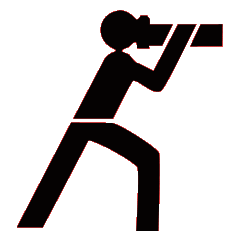
Fritz Pölking

Fritz Pölking
"What to do?" says Zeus......
During my last tour through the German National Parks (Berchtesgaden NP, Bavarian Forest NP, and Swiss Saxony NP) in October of 2001, I made different tests with seven types of different film.
Subjective and somewhat generalized result:
The Fuji slide film material tends to have a somewhat neutral color reflection as well as a neutral scope of contrast.
The Kodak Ekta chrome slide film material tends to have a
somewhat brownish color reflection as well as a steeper / harder contrast.
Ektachrome slide film has more contrast then what is there in reality. This is
good for motifs without any or little contrast, but not so good for motifs with
a normal or high amount of contrast.
Ektachrome is recommended if you want warm (earth tone) colors, but not if you prefer real or true colors and under no circumstances if you want to reflect the colors gray or black in a realistic manner.
Chamois, elephants, buffalo or male blackbirds will suddenly turn to brown colored animals using Ekta chrome film.
So under no circumstances should this one be used in Africa.
Funny: Since the existence of Velvia-50, (almost) all nature photographers preach that Velvia has a sensitivity of only 40 ISO instead of the noted 50 ISO and will expose it as such. Only Fuji adamantly insists that Velvia is a 50 ISO film.
The following series of shots (and a few other comparable series) I took with a timer automatic and as a bracketed series, meaning that slide one is always 0.3 underexposed, the second slide exposed correctly and the third slide 0.3 overexposed.
While with six rolls of film all comparable slides on the different types of film had an equal amount of density, the Velvia-50 with the 0.3 overexposed slides had an identical density with the 0.3 underexposed slides of the other 6 types of film.
So judging according to this, you have to expose the Velvia-50 not with a 40 ISO, but rather with 32 ISO, if you want a normal density, meaning slides with a regular darkness. The clarity/sharpness of the Velvia is fantastic.
I was not able to find any difference between Provia-100 and Sensia-100, with the exception that the Sensia-100 had a somewhat warmer color balance, and that the Provia-100 is twice as expensive.
My personal subjective suggestion:
The Fuji Chrome Sensia-100 for all motifs.
If you are looking for a somewhat warmer color synchronization
with individual motifs (or maybe always)
a 81-A filter should be used with the Sensia-100.
If you like particular sharpness and strong colors: Velvia-50, and do trial bracketing series in order to see which ones, with 50, 40 or 32 ISO exposed Velvia slides, you like the best.
|
|
|
|
|
|
|
|
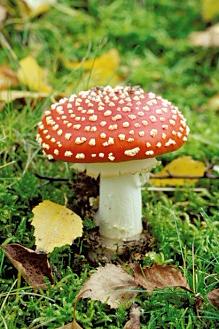
Ektachrome 100 VS
E100VS
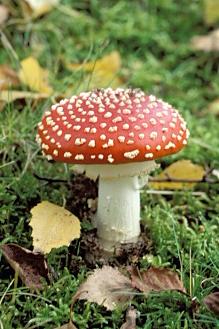
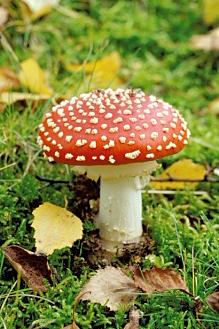
Left: Fuji Chrome Sensia-100, right: Elite Chrome-100.
Here in this direct comparison you can see
the different color balance very well.
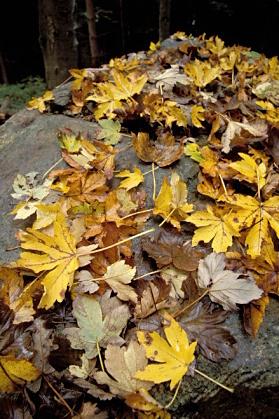
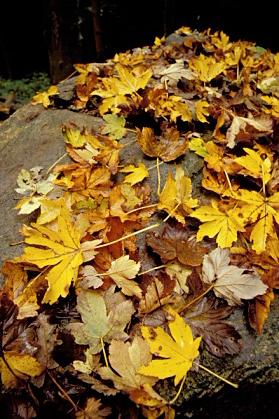
A good example of how Fuji Chrome and Ekta Chrome slide film
is generally laid out:
Left Fuji Chrome Sensia-100. Right Ekta Chrome Elite-100EX.
The Fuji slide film material is generally softer, the Ekta Chrome more hard.
You can notice this wonderfully on the trees in the background.
Whereas the trees almost disappear in the black with the Kodak film, through the steeper grade, you can certainly still see them with the softer Fuji material.
Another thing clearly recognizable is the different "Philosophy" of color balance between Kodak and Fuji.
Whereas on the left with the Sensia-100 the gray rock is depicted as a gray rock, the Kodak film turns the same rock into a brown one.
By the way, I am (unfortunately) not sponsored by either
Kodak or Fuji, nor from Nikon or Canon.
All my films, cameras and lenses are bought at regular
store prices – just like any other customer –
from ISARfoto Bothe in Icking by Munich.
Here is a highly interesting comment for the above film test:
Hello Mr. Pölking, hello Mr. Keese,
this is a comment from a photo dealer:
according to Fuji the sensitivity of 50 ISO for the Velvia only refers to the developing of this film with the original Fuji chemicals. This process is offered here in Germany i.e. from the Fuji Color Laboratories (PHOTEX in Düsseldorf or HELZEL in Ansbach). Other laboratories will use the so-called E-6 process and the commonly known 3 or 4 bath process. The result will always be in a determined spread of give or take 1/3rd aperture. In order to develop a Velvia in a "normal" lab correctly, many small and specialized labs will use a "push 1/3 aperture" process.
Besides that, Canon defines / adjusts their exposure setting not according to the Kodak gray-card with 18% reflection, but according to their own method of measure with a 25% reflection so that in this, another 1/3 aperture difference may be found.
So much for the comments of a photo dealer.
Sincerely,
Your Klaus Bothe.
Well, what Mr. Bothe wrote here is certainly very interesting for slide photographer.
The specialized Canon adjustment can be set apart for this test since it had the same effect, meaning no visible effect at all - with the exception of the Velvia, on all the films used.
That laboratories produce a deviation of 0.3 aperture should be taken into consideration by choosing the right lab. Something that may not be commonly known is the fact that different labs produce different color balances.
During the time before Sensia / Velvia I enjoyed working with the Fuji Chrome-100 and Fuji Chrome-50 of that time. Actually the Fuji Chrome-50 was a great film: sharp and soft in transition, not as brutal as its replacement Velvia.
There was one draw-back with the Fuji Chrome-50: the color balance was cold. Taking a picture with the Fuji Chrome-100 and then again with the Fuji Chrome-50 you could clearly see the difference.
However there was a trick: I always had the Fuji Chrome-100 developed at Studio-13 at the Stuttgart Airport and the Fuji Chrome-50 with Kodak in Stuttgart using their E-6 process, because Kodak had a process which had the pictures turn out clearly more brown as all other labs.
If you did that, you ended up with pictures that harmonized fantastic.
You just had to make sure under no circumstances sending Fuji Chrome-100 slide films to Kodak for developing. Those always came back with a horrible brown tinge as if they were Ekta Chrome Panther slides. Maybe you remember this unmentionable Kodak slide film which came out on the market about 10 years ago with much ado and which the photo media rejoiced as "the best achievement in the area of slide films since the implementation of the E-6 processing".
In reality was this film so brutally harsh and had such a great brown tinge that Kodak secretly took it off the market two years later and had it disappear.
According to the information from Mr. Bothe the situation is pretty much clear:
1. You send your rolls of film to a lab which uses the special Fuji chemicals ( CR-56 processing) and expose it as 50 ISO.
2. You send your rolls of film to a smaller specialized lab which automatically uses a 0.3 exposure push processing and expose it as 50 ISO.
3. You send your rolls of film to a normal lab with regular E-6 processing and should then test through trial films if this lab needs a Velvia exposure of 32 ISO or 40 ISO.
Question: If Fuji knows that their Velvia film only has 50 ISO when "specially developed" in their own "juice" but in all other labs with the E-6 processing (meaning 99% of all labs) only 32/40 ISO, why not write on the packaging "50 ISO with Fuji CR-56 processing and 32/40 ISO with E-6 processing" ?
Why leave your customers out in the rain like
that?
On the box it says: 50 ISO with CR-56 or E-6 processing.
Professionals will certainly test the different films and processing of different labs before they expose large numbers of film rolls.
But what about the amateurs who rarely use a Velvia or decide to splurge for a change and go and buy an expensive Velvia with the high expectation of especially good results.
Why does Fuji let them run right into that?
Velvia slide films can be underexposed 1.3 apertures in the worst case (-0.7 for the –E-6 processing, -0.3 for the Canon form of measure and 0.3 for a lab that automatically under-exposes).
My suggestion: to test Velvia very carefully, and always use the same lab with the same E-processing and always ask the photo dealer if he changed labs since the last time you were there.
All will be fine.......
Fritz Pölking